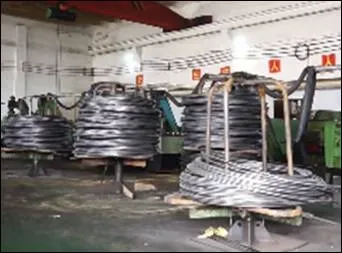Nov . 13, 2024 10:17 Back to list
m10 expansion bolt
Understanding M10 Expansion Bolts A Comprehensive Guide
M10 expansion bolts are integral fasteners widely used across various construction and engineering projects. Their unique design and functionality make them ideal for securing heavy loads to concrete or masonry surfaces. This article aims to provide a comprehensive overview of M10 expansion bolts, including their structure, uses, and installation process.
What is an M10 Expansion Bolt?
An M10 expansion bolt is a type of anchor that consists of a bolt, a sleeve, and a cone-shaped expander. The M10 classification refers to the metric thread diameter of the bolt, which is 10 millimeters. Expansion bolts operate by expanding the sleeve within a pre-drilled hole in solid materials, creating a strong hold—perfect for anchoring machinery, mounting frames, or securing heavy objects.
Structure and Materials
Typically made from high-strength materials like stainless steel, carbon steel, or galvanized steel, M10 expansion bolts are designed to resist corrosion and withstand heavy loads. The choice of material often depends on the environment in which they are used. For example, stainless steel versions offer enhanced resistance to rust and are ideal for outdoor applications or places with high moisture levels.
Applications
m10 expansion bolt

M10 expansion bolts are versatile and suitable for a variety of applications, including
1. Construction Used to secure structural components such as beams and columns to concrete foundations. 2. Installation of Machinery Ideal for anchoring heavy machinery in place, ensuring stability and safety. 3. Mounting Shelves and Racks Widely used in warehouses, garages, and residential setups to support shelving units. 4. Outdoor Equipment Perfect for securing playgrounds, benches, and other outdoor fixtures that require a strong and durable anchor.
Installation Process
Installing M10 expansion bolts involves several key steps
1. Drilling the Hole A hole is drilled into the concrete or masonry surface using a hammer drill. The diameter and depth of the hole must match the specifications of the expansion bolt. 2. Inserting the Bolt The expansion bolt is inserted into the hole. It's essential to ensure that the cone of the bolt is positioned correctly for optimal expansion. 3. Tightening the Nut As the nut is tightened, it pulls the bolt upward, causing the sleeve to expand against the sides of the hole. This creates a secure grip.
4. Final Checks After tightening, it’s important to check that the bolt is firmly anchored and can handle the expected load.
In conclusion, M10 expansion bolts are essential components in construction and engineering. Their strength, versatility, and ease of installation make them a preferred choice for securing heavy materials and equipment. Proper understanding and installation of these bolts are crucial for ensuring safety and structural integrity in various applications.


